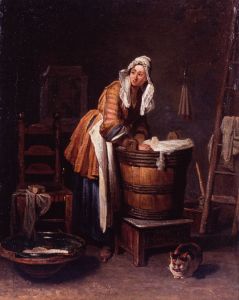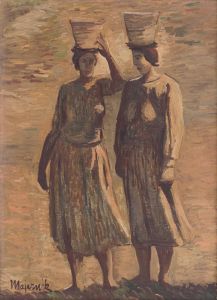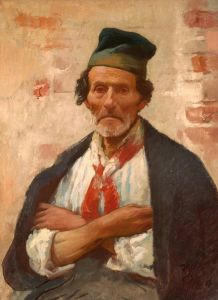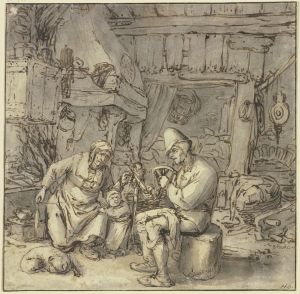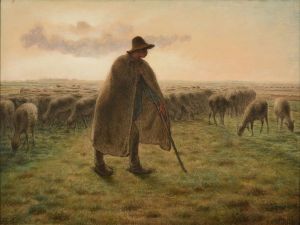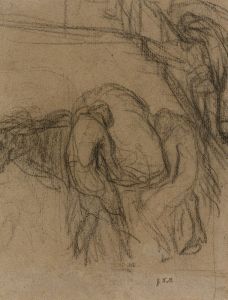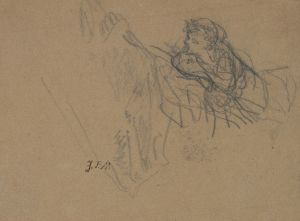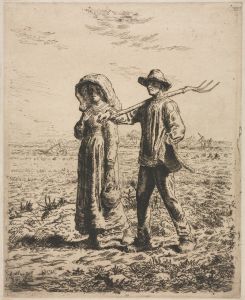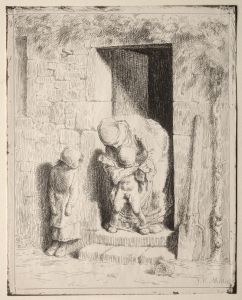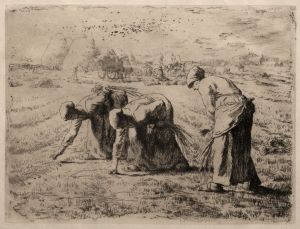
Tête de paysanne, étude
A hand-painted replica of Jean-François Millet’s masterpiece Tête de paysanne, étude, meticulously crafted by professional artists to capture the true essence of the original. Each piece is created with museum-quality canvas and rare mineral pigments, carefully painted by experienced artists with delicate brushstrokes and rich, layered colors to perfectly recreate the texture of the original artwork. Unlike machine-printed reproductions, this hand-painted version brings the painting to life, infused with the artist’s emotions and skill in every stroke. Whether for personal collection or home decoration, it instantly elevates the artistic atmosphere of any space.
Jean-François Millet, a prominent French painter and one of the founders of the Barbizon school, is renowned for his depictions of peasant life. One of his works, "Tête de paysanne, étude" (Head of a Peasant Woman, Study), exemplifies his focus on rural subjects and his dedication to portraying the dignity and simplicity of peasant life.
Millet was born in 1814 in the village of Gruchy, Normandy, into a family of farmers. His upbringing in a rural environment greatly influenced his artistic vision, and he often drew inspiration from the everyday lives of peasants. Millet's work is characterized by a realistic style that captures the essence of rural life with empathy and respect.
"Tête de paysanne, étude" is a study piece, which suggests that it was likely created as a preparatory work for a larger composition or as an exploration of a particular subject. Studies were common in Millet's practice, as they allowed him to experiment with form, light, and expression before committing to a final piece. This particular study focuses on the head of a peasant woman, a subject Millet frequently returned to throughout his career.
The painting reflects Millet's interest in the human condition and his ability to convey emotion through subtle details. The woman's face is rendered with careful attention to her expression, capturing a sense of quiet strength and resilience. Millet's use of light and shadow adds depth to the study, highlighting the contours of the woman's face and emphasizing her features.
Millet's work often carried a social message, emphasizing the importance and dignity of the rural working class during a time when industrialization was rapidly changing the landscape of France. His paintings, including studies like "Tête de paysanne, étude," were not merely portraits but also commentaries on the social conditions of his time. By focusing on peasants, Millet elevated their status in the art world, challenging the traditional hierarchy that favored historical and mythological subjects.
Throughout his career, Millet faced both praise and criticism. While some appreciated his honest portrayal of rural life, others viewed his work as too raw or politically charged. Despite this, Millet remained committed to his vision, and his influence can be seen in the works of later artists who admired his dedication to realism and social themes.
"Tête de paysanne, étude" is a testament to Millet's skill as an artist and his deep empathy for his subjects. Although it is a study, it encapsulates the qualities that define Millet's oeuvre: a focus on the everyday, a commitment to realism, and a profound respect for the people he depicted. Today, Millet is celebrated as a master of 19th-century art, and his works continue to be studied and admired for their technical excellence and social relevance.





